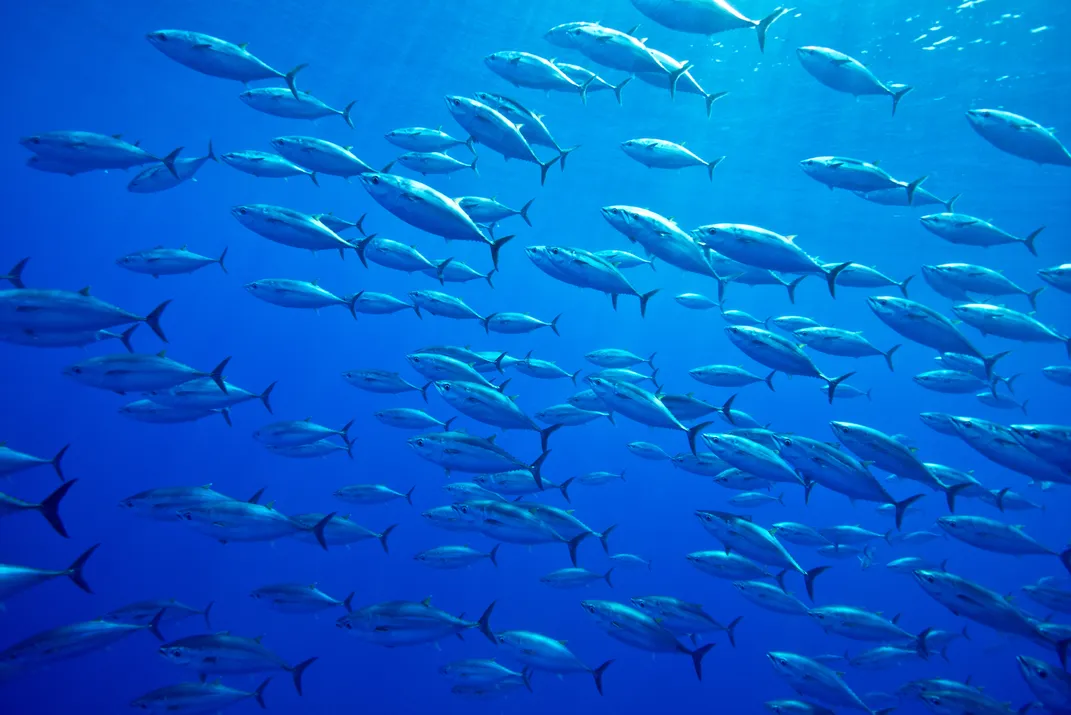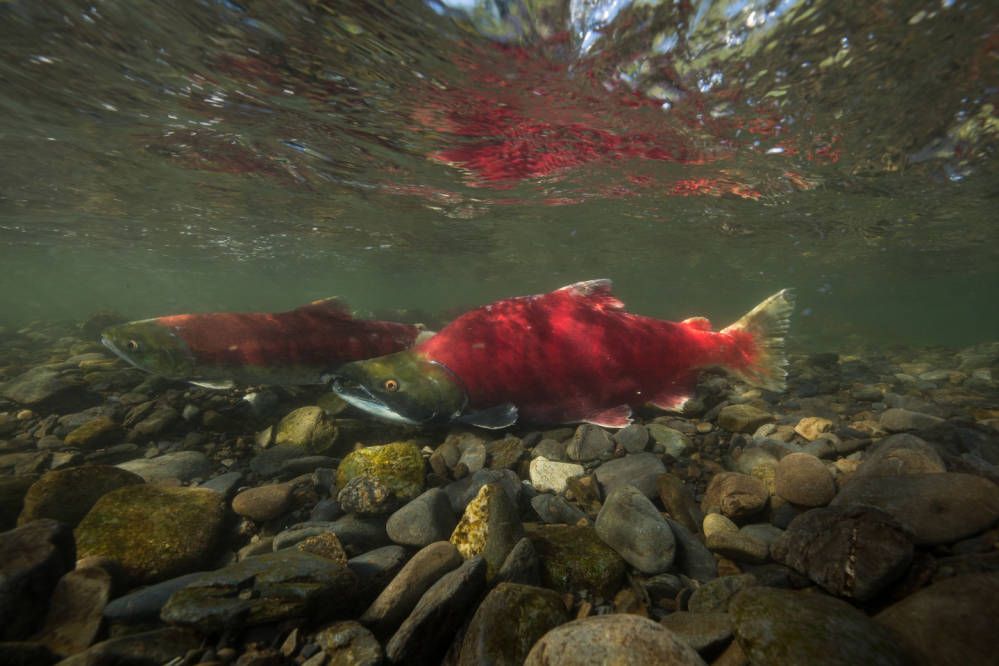NATIONAL MUSEUM OF NATURAL HISTORY
Why Fishes are the Catch of the Day for Climate Research
Fishery management systems can teach scientists how fish can be raised sustainably in wild fisheries.
/https://tf-cmsv2-smithsonianmag-media.s3.amazonaws.com/blogging/featured/A_fisher_in_a_boat_hooking_a_small_fish..jpg)
Climate change in the ocean has made a splash with people who want to protect marine animals, like fishes, from warming oceans. But the problem goes beyond endangered species and threatened ecosystems. It also affects people who rely on fishes not only for food but also for income.
To learn more about these impacts, scientists at the Smithsonian’s National Museum of Natural History and the Smithsonian Marine Station are collecting data on where fishes live today and how those environments are changing. Gathering and analyzing this information is the most accurate way to protect the fishes and the fishing communities.
“Understanding how fish respond to climate change is important but not the only factor,” said Steven Canty, a marine biologist and the program coordinator of the Marine Conservation Program at the Smithsonian Marine Station. “We can’t only be thinking about the fish when so many people rely on them for food security and their livelihoods.”
Migrating northward
Wild fisheries are marine or freshwater areas where wild fishes live until they are captured. They host millions of tons of fishes per year, making them an important source of nutrition and critical economic engines.
“If the fisheries are doing well, the people benefit. But, if they are struggling, people really suffer,” said Canty.
One way fishes are struggling comes from warming water. Fishes prefer specific temperature ranges, so as the ocean temperatures change, fishes are relocating to habitats that better meet their needs. Sometimes, this means shifting northward, which Bruce Collette, an emeritus ichthyologist at the Smithsonian’s National Museum of Natural History and the National Oceanic and Atmospheric Administration’s Systematics Laboratory, has recently observed.

“Some species of tuna, like the Atlantic bluefin tuna are extending their range north. They’re now in Artic waters, where they haven’t been in a long time,” said Collette.
As more species migrate north, they’re harder for fishers to find.
“If fish distributions are changing and people have to go farther afield to find them, they may not be able to afford to do that,” said Canty. “It puts their entire livelihood in danger.”
Anticipating what the economic results of relocation could be allows scientists to work with communities to adapt and enable fish populations to gain resiliency.
Forecasting the future
By gathering information about fishery ecosystems, Canty and his collaborators are creating models to forecast what strategies will help both fishes and people.
“It’s all connected,” Canty said. “But you can’t put everything in a model. We try to pick the most important streams of data, like water salinity and fish location, to give us the most complete picture possible.”
For Canty, the way forward is adaptive management – monitoring environmental changes and working with fishing communities to update their approaches.
“It’s like updating the operating system on your laptop,” said Canty. “New things come out, people understand more and improve things on how your laptop runs. We need to do the same thing with fisheries, update their management as new and better information is collected.”
A collaborative approach

Around 780 million people rely on fishing for their income. It’s important to incorporate what they have to say into the adaptive management process.
“They are the ones interacting with the fisheries every day. They know the systems better than we do,” said Canty. “It would be a huge oversight to not include their generations of knowledge in managing the fisheries.”
Building a comprehensive knowledge base will let researchers devise better ways to combat and respond to marine environmental upheaval.
“We are so connected to these systems that when there is a breakdown it affects everyone in the chain,” Canty said. “Humans are deeply connected with nature and preserving it helps everyone.”
The Evolving Climate series wraps June 3 when we’ll show you how researchers in the museum’s Anthropology department are working with local communities to document the ongoing changes and challenges they’re facing.
Evolving Climate: The Smithsonian is so much more than its world-renowned exhibits and artifacts. It is an organization dedicated to understanding how the past informs the present and future. Once a week, we will show you how the National Museum of Natural History’s seven scientific research departments take lessons from past climate change and apply them to the 21st century and beyond.
Related stories:
How Fungus-Farming Ants Fertilize Climate Research
Why Plants are Seeding Climate Studies
Scientists Describe New Species of Rare Bryde’s Whale
Rare Megamouth Shark Arrives at the Smithsonian
Can Genetics Improve Fisheries Management?

